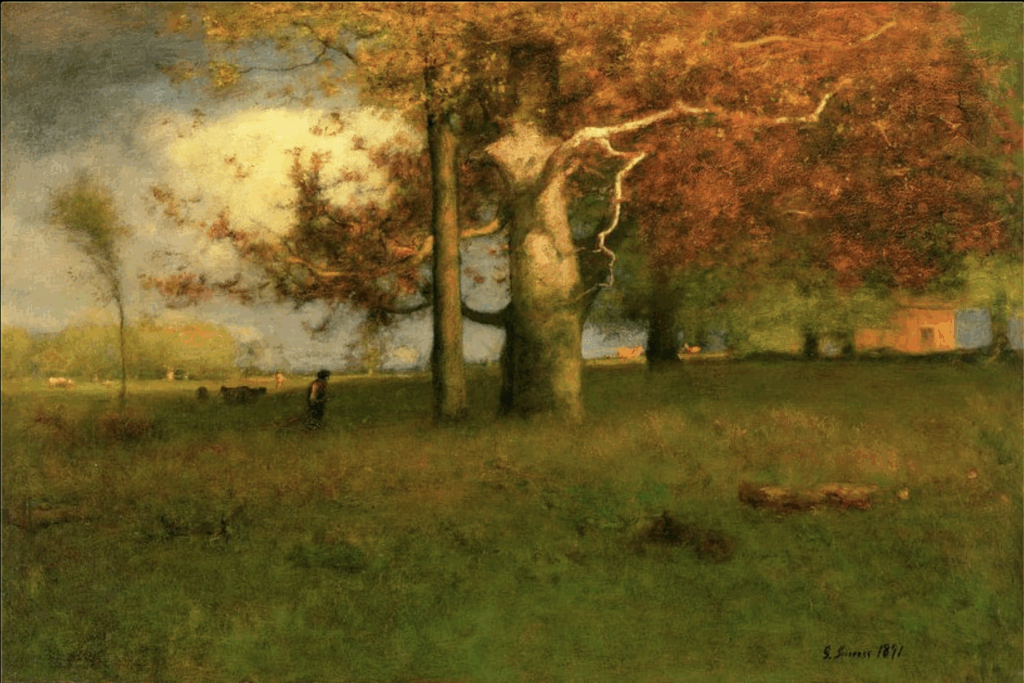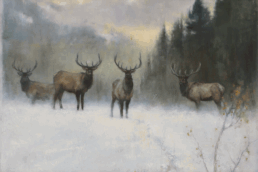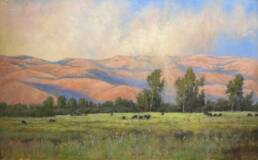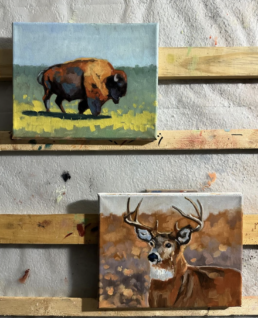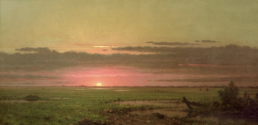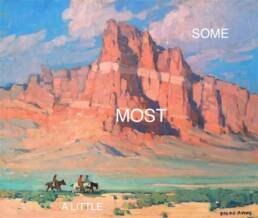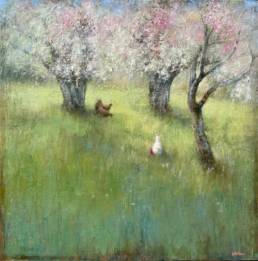Autumn is one of the most beloved seasons for artists, especially plein air painters. The crisp air, golden light, and landscapes ablaze with reds, oranges, and yellows are irresistible. But making your autumn colors pop on the canvas isn’t always easy. Fall colored pigments can quickly become overwhelmingly loud or even dull.
The secret isn’t just in choosing bold pigments, it’s in how you use them.
-
Warm vs. cool
-
Light vs. dark
-
Sharp vs. soft edges
These are a few tricks all great autumn paintings use. But each artist leans on them differently. Most often, the strongest paintings tend to lean on one of these techniques more than the others. That emphasis gives each piece its unique feeling and structure.
Here are 3 painter-tested ways to make your autumn colors pop in your paintings without overworking the color.
1. Warm vs. Cool: Let Temperature Create the Glow
The most effective way to make warm fall colors stand out is to place them next to cooler tones, like a blue sky, a violet shadow, or cool green foliage. Cooler colors, when contrasted, give warmth a reason to glow.
Isaac Levitan – In Golden Autumn, the golden trees shine next to a cool river and pale sky. The color isn’t overly saturated, but it is cooler than the warm trees.
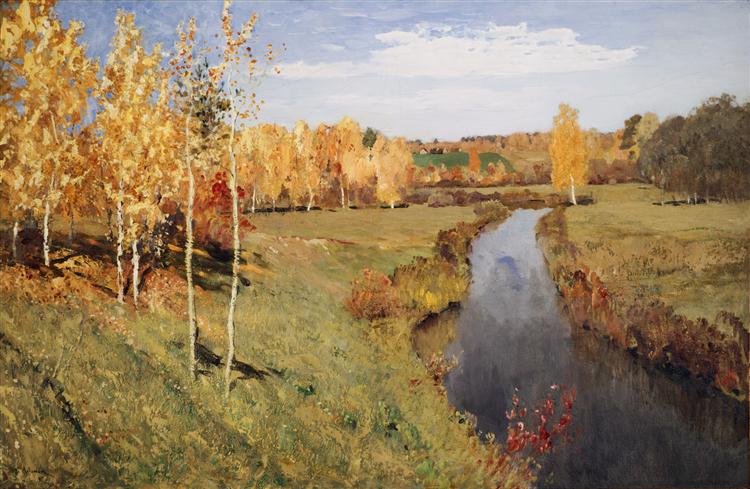
Charles Warren Eaton, one of my favorite artists, uses rich variations of gold in the land and trees, set against a cool blue sky. The temperature difference between the sky and land makes the entire scene glow quietly.
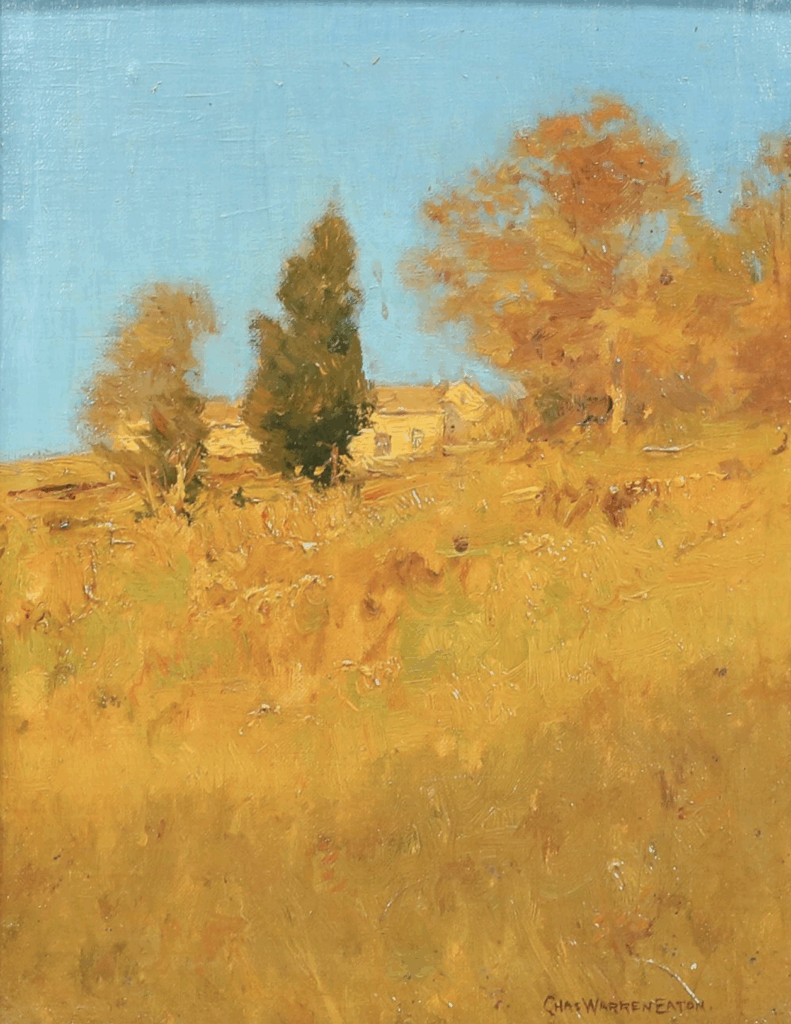
My painting, Autumn Afternoon (6×12), uses oranges and yellows that pop beautifully against the violet ground and green shadows. Even the dark cottonwood trunks add to the effect with their dark-tinted bark.
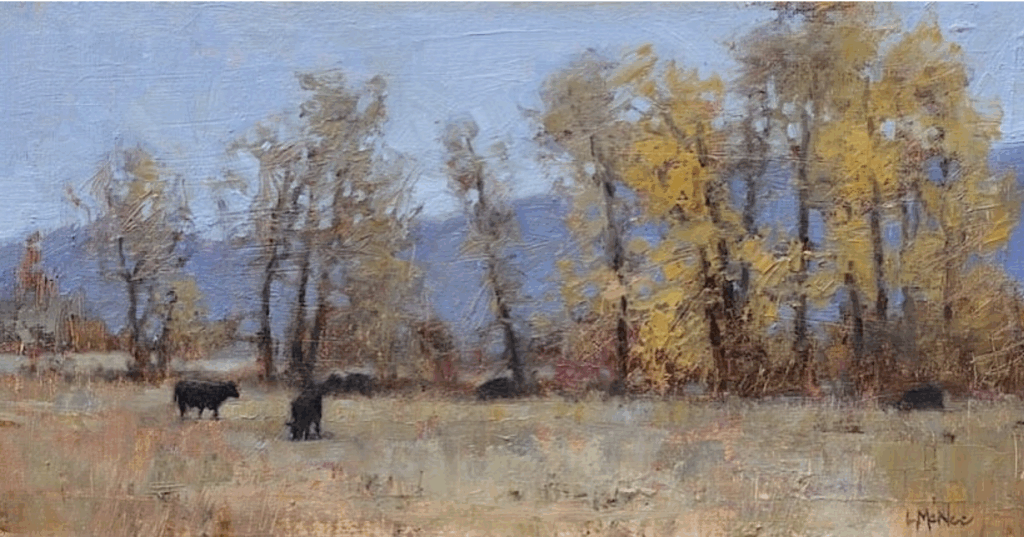
Painter’s Tip: Use cool tones in the sky, shadows, or background to let your warm foliage do the work. Don’t crank up the saturation—just create the right environment.
2. Light vs. Dark: Use Value for Strong, Clear Contrast
Sometimes what makes color pop isn’t actually the color, it’s the value. Placing bright trees against dark forests, or pale skies behind dark trunks, creates structure and clarity.
Robert Moore, my talented friend, creates aspen trees that shine because they’re set against deep, dark backgrounds. The value contrast makes the yellows feel brighter and more defined.
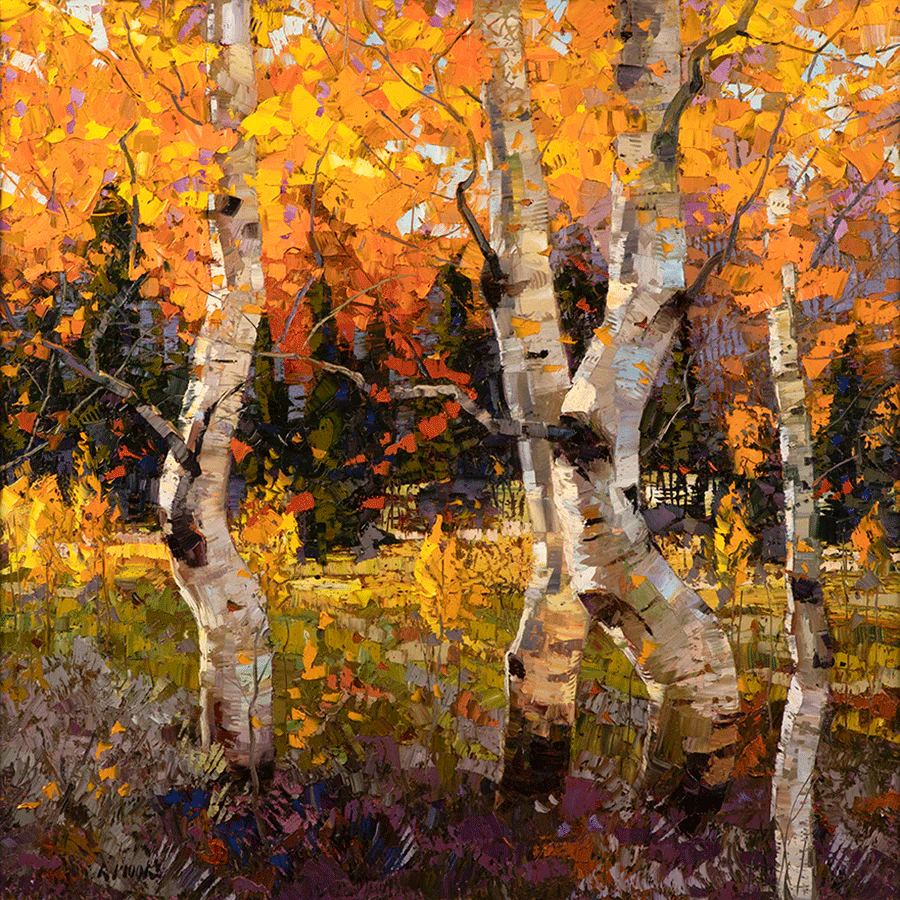
Wolf Kahn
uses large, dark shadow shapes to anchor his glowing yellow trees below.
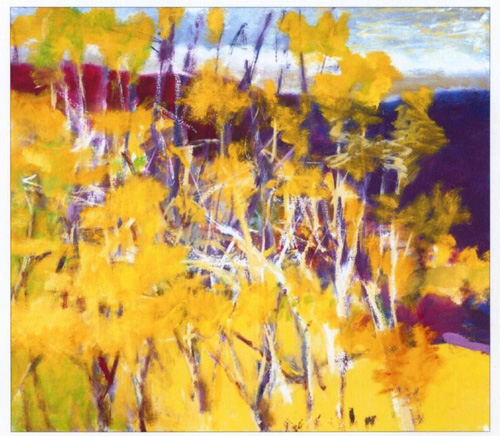
Painter’s Tip: Squint at your painting. Do your trees stand out in value, or are they blending in? Consider using strong light/dark contrast to highlight your subject.
3. Sharp vs. Soft: Edges and Atmosphere
Autumn color can feel flat if every leaf and tree is fully defined. The solution? Use a mix of sharp and soft edges, and build atmosphere through layering.
George Inness painted fall with softness, muted colors, blurred edges, and thin layers that give a feeling of mist and depth. The colorful trees contrast against the more muted tones, which make the fall colors pop.
Fritz Lindström Höstfärger uses bright oranges that are softened with loose brushwork, and vertical tree trunks cut sharply through the chaos. The distinct edgework of the trees contrasts with the calm, pale blue water. This creates distance from the lively, hot colors in the foreground.
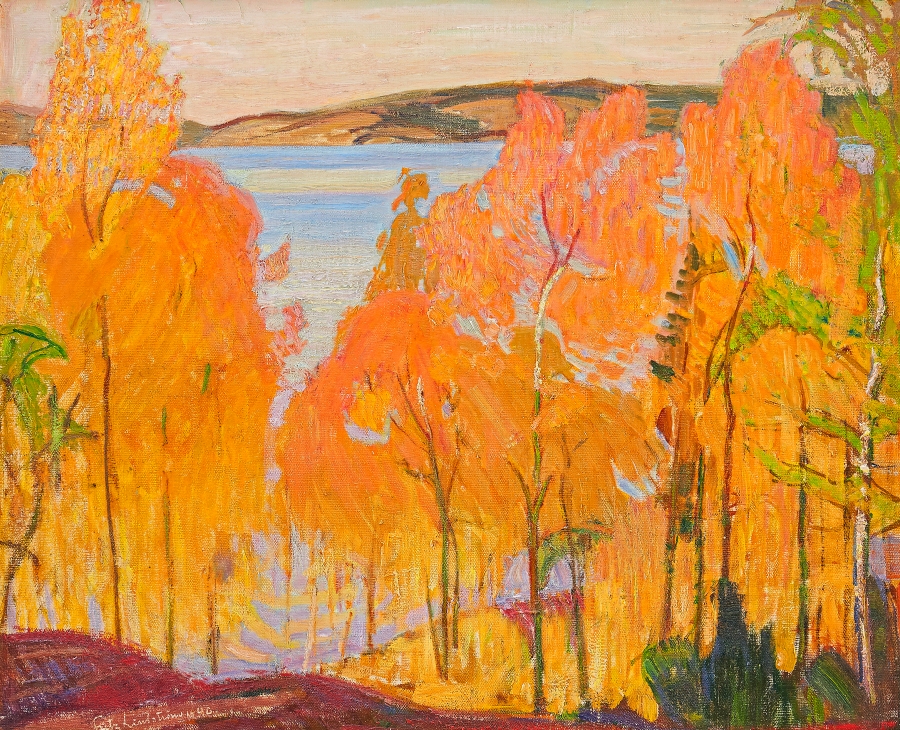
Bruce Crane whose moody autumn scene glows with earth tones and foggy light, is another master at creating atmosphere. Note how he balances harder edges and soft transitions, and thin layers. This balance of edgework gives space and emotional weight to the foreground color.
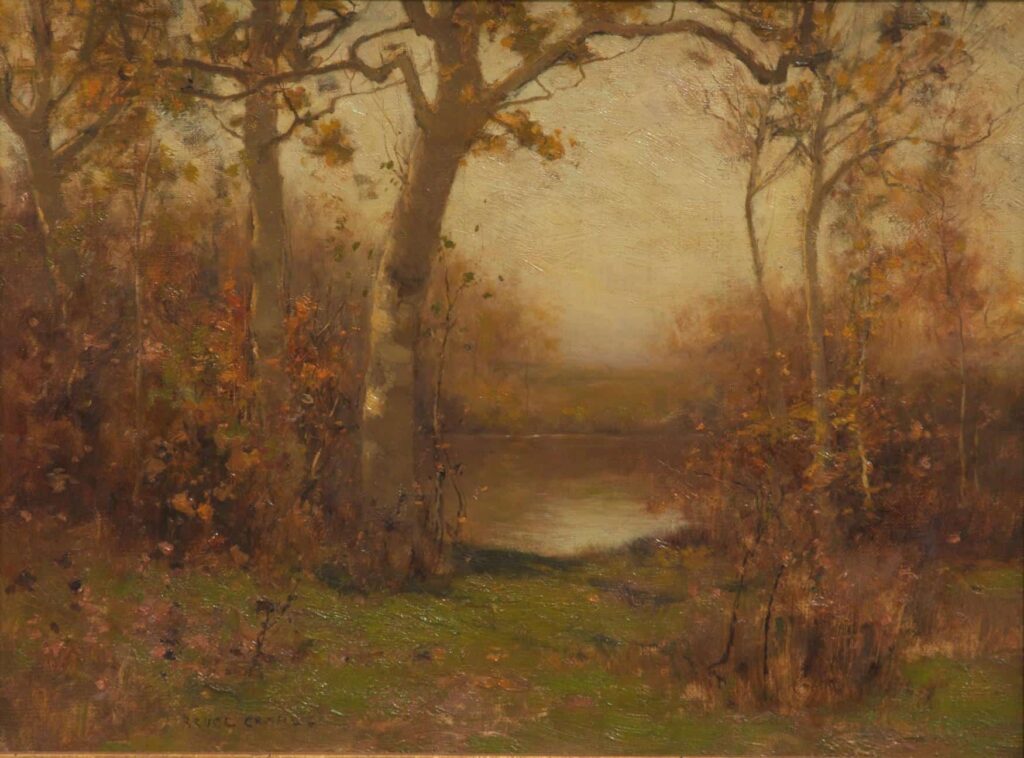
Painter’s Tip: Use harder edges in your focal areas, and soften others to suggest space and atmosphere.
Putting It into Practice
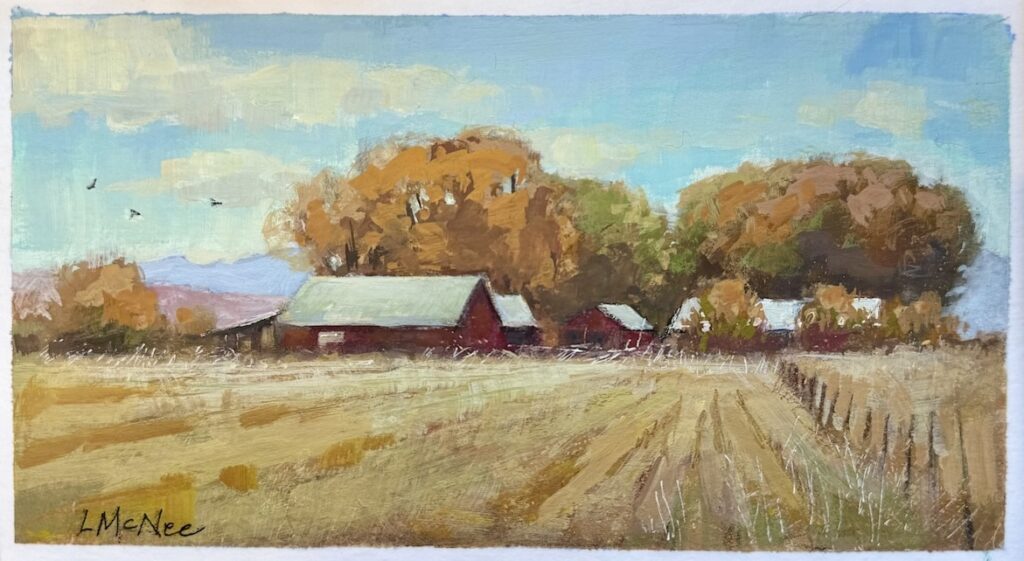
Lori McNee – Autumn Red Barn, gouache
This small gouache study was part of a lesson in my online workshop. Though simple, it demonstrates how even a quick painting can come alive when you use the three painterly contrasts:
- Warm vs. Cool: Golden trees and grasses glow against a pale blue sky.
- Light vs. Dark: The red barns and tree masses create visual weight and clarity.
- Edge Variation: The edges between the trees and sky are slightly sharper, helping the shapes stand out and giving structure to the soft composition.
With minimal detail, this piece still feels full of light and atmosphere because the contrasts are doing the heavy lifting.
Want to learn how to paint scenes like this? I teach this approach in my online gouache landscape workshop. Click here to learn more.
Final Thoughts
To make autumn colors pop in a painting, it takes more than bright pigments. The real power lies in the contrast between warm and cool hues, light and dark, as well as softness and sharpness. The artists we’ve examined each leaned into one of these techniques more than the others, creating their own distinct sense of fall.
I hope this inspired you!


